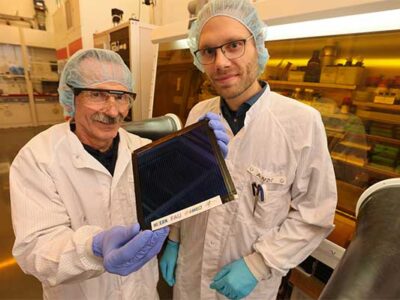A publication in the Journal of the ‘Federation of American Societies for Experimental Biology’ discusses how a specific combination of lipids contribute to how living creatures capture sunlight and convert it into energy.
Scientists have now used this theory to develop a new method of exploiting the power of sunlight by focusing on these naturally occurring combination of lipids that have been strikingly conserved throughout evolution. A research theory that may help develop a new type of photovoltaic technology.
In-Depth Story:
Since Alexandre Edmond Becquerel first discovered the photovoltaic effect in 1839, humankind has sought to further understand and harness the power of sunlight for its own purposes.
In a new research report published in the August 2014 issue of the FASEB Journal, scientists may have uncovered a new method of exploiting the power of sunlight by focusing on a naturally occurring combination of lipids that have been strikingly conserved throughout evolution. This conservation—or persistence over time and across species—suggests that this specific natural combination of lipids is important for ensuring light capture and conversion.
“We confirmed the properties of individual thylakoid galactoglycerolipid (or glycolipid) classes previously reports as HII forming lipids, but brought to light how these properties are subtly orchestrated in the matrix in which proteins are embedded, as contributing components for the elaboration of the architecture of photosynthetic membranes and its dynamics,” said Juliette Jouhet, Ph.D., a researcher involved in the work from the Laboratoire de Physiologie Cellulaire and Vegetale at the Institut de Recherches en Technologies et Sciences pour le Vivant in Grenoble, France.
To make this discovery, Jouhet and colleagues analyzed biomimetic membranes reconstructed with different mixtures of natural lipids, so as to comprehend the contribution of each one of them in the observed biophysical properties. They then analyzed the membranes by neutron diffraction methods. The cohesion between membranes was analyzed by the evolution of the distance between bilayers upon hydration.
“This report helps fulfill the hope of Jimmy Stewart’s character, Tony, in ‘You Can’t Take it with You,'” said Gerald Weissmann, M.D., Editor-in-Chief of the FASEB Journal. “Just as he once dreamt of harnessing the process by which grass derives energy from the sun, this report helps us do just that by defining the green engines in plants and higher organisms that accomplish the task.”
Publication Reference:
B. Deme et al: Contribution of galactoglycerolipids to the 3-dimensional architecture of thylakoids. The FASEB Journal, 2014.












Comments